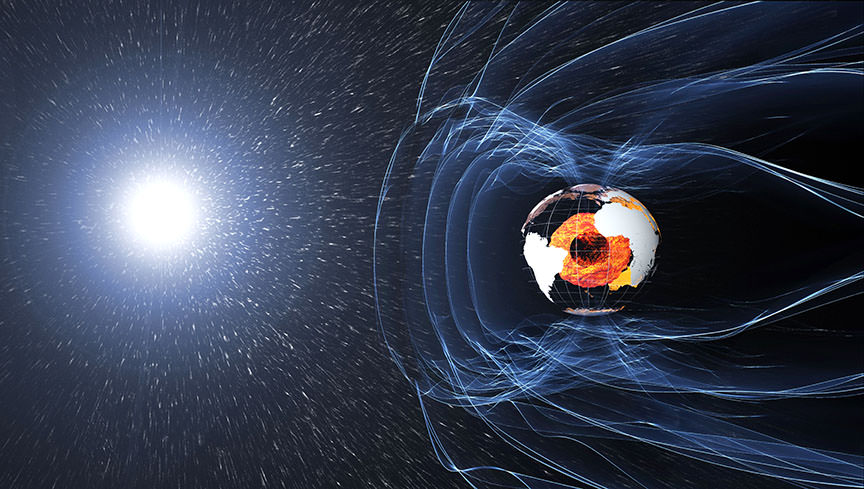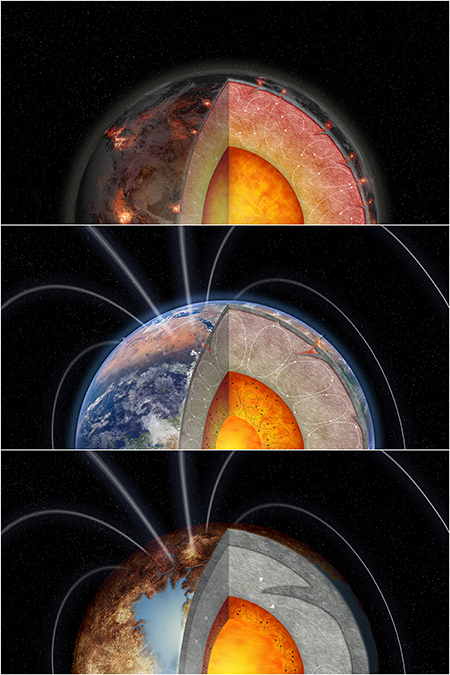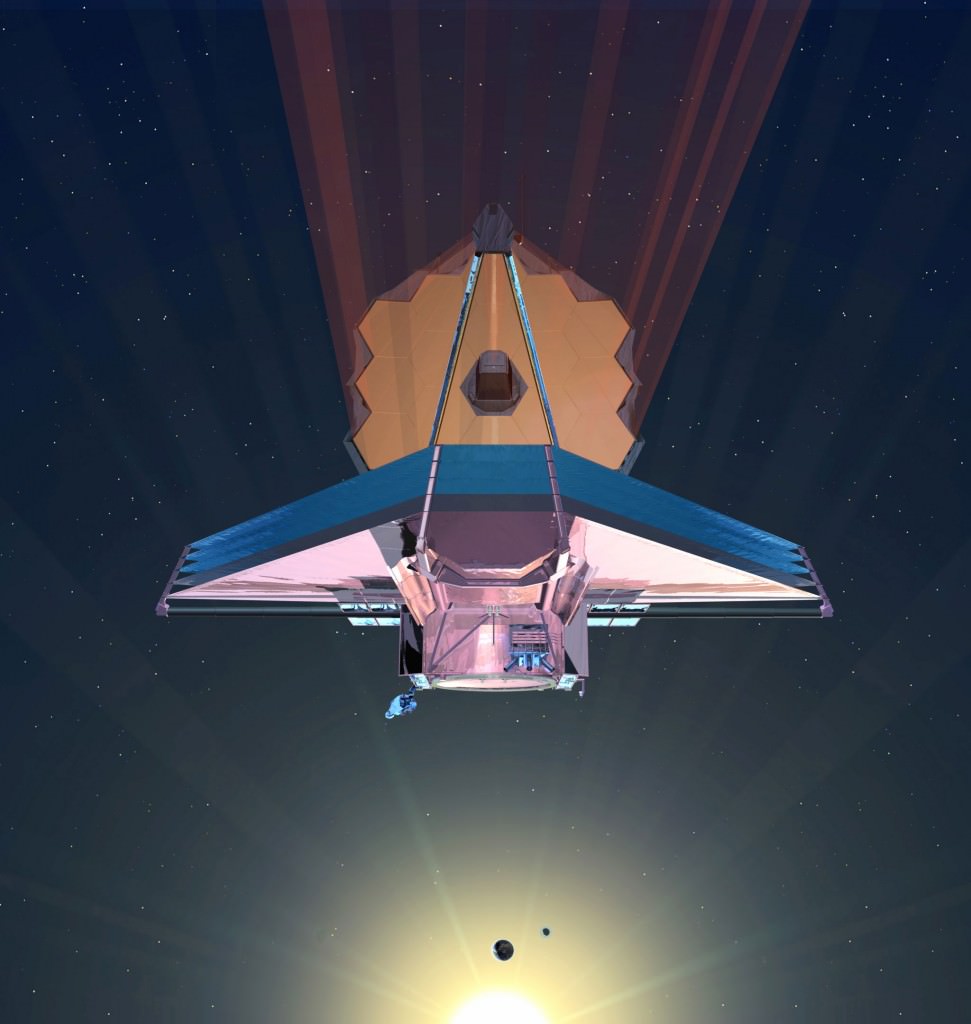To date, astronomers have confirmed the existence of 4,301 extrasolar planets in 3,192 star systems, with another 5,650 candidates awaiting confirmation. In the coming years, next-generation telescopes will allow astronomers to directly observe many of these exoplanets and place tighter constraints on their potential habitability. In time, this could lead to the discovery of life beyond our Solar System!
The only problem is, finding evidence of life requires that we know what to look for. According to a new study by an interdisciplinary team of scientists from the University of California Santa Cruz (UCSC), radioactive elements might play a role in planetary habitability. Future studies of rocky exoplanets, they argue, should therefore look for specific isotopes that indicate the presence of long-lived elements like thorium and uranium.
On Earth, the internal heating caused by the slow decay of the heavy radioactive thorium and uranium drives plate tectonics, which may be necessary for maintaining Earth’s magnetic field. This field is what protects Earth from radiation, cosmic rays, and prevents our atmosphere from being stripped away. This is why exoplanet-hunters and astrobiologists believe that magnetic fields could be critical to habitability.

In fact, it was the work of astronomy and astrophysics professor Natalie Batalha with the Astrobiology Initiative at UCSC that sparked the interdisciplinary collaboration that led to this study. As she explained in a UCSC Newscenter release, planetary dynamo has been tied to habitability in several ways:
“It has long been speculated that internal heating drives plate tectonics, which creates carbon cycling and geological activity like volcanism, which produces an atmosphere. And the ability to retain an atmosphere is related to the magnetic field, which is also driven by internal heating.”
Carbon cycling refers to the process where carbon dioxide (CO2) is added to the atmosphere through volcanic activity and sequestered by interaction with various minerals (which leads to carbonates). This process is crucial to maintaining stable temperatures over time, which ensures that complex, long-term evolutionary processes can take place.
In addition, fast-moving charged particles (aka. solar wind) can steadily erode a planet’s atmosphere if no magnetic field is present. This is what happened on Mars, where the disappearance of its magnetic field (ca. 4.2 billion years ago) caused much of its atmosphere and surface water to be lost to space – leading to it becoming the cold, desiccated, and irradiated environment it has today.

On Earth, the magnetic field is the result of convection in its liquid outer core, which creates a dynamo effect as it rotates in the opposite direction as Earth. By providing internal heating through slow decay, Earth’s radioactive elements are essential to maintaining this effect. As Francis Nimmo, professor of Earth and planetary sciences at UCSC and first author on the study, explained in a UCSC Newscenter release:
“What we realized was that different planets accumulate different amounts of these radioactive elements that ultimately power geological activity and the magnetic field. So we took a model of the Earth and dialed the amount of internal radiogenic heat production up and down to see what happens.“
What they found is that there is a critical balance when it comes to radioactive elements and radiogenic heating. Too much, more than what Earth experiences, would have a number of negative effects on potential habitability. For one, since thorium and uranium on Earth are mostly found in the mantle, an excess of these would cause the mantle to act as an insulator.
This would prevent the molten outer core from shedding enough heat to maintain convective motions. Another consequence is that too much radiogenic heating would result in far more volcanic activity, which could trigger extinction-level events. On the other hand, too little radioactive heat would result in no volcanism, leading to a geologically “dead” (aka. stagnant lid) planet.

As Francis Nimmo, professor of Earth and planetary sciences at UCSC and first author of the study, explained:
“Just by changing this one variable, you sweep through these different scenarios, from geologically dead to Earth-like to extremely volcanic without a dynamo. Now that we see the important implications of varying the amount of radiogenic heating, the simplified model that we used should be checked by more detailed calculations.”
Heavy elements like thorium and uranium are created from the merger of neutron stars, which are extremely rare events. The availability of these elements in a circumsolar disk, from which systems of planets form, would therefore depend on the proximity of these rare events. This would lead to a considerable degree of variability between planetary systems.
To determine the range in variability, Nimmo and colleagues consulted europium measurements of nearby stars conducted by astronomers. Europium is easily-detected in stellar spectra and is created by the same processes that create thorium and uranium. Europium can therefore be used to determine just how common these two other elements are in nearby stars and planets.
By inputting these measurements into his models of radiogenic heating, Nimmo and the research team were able to establish a range of estimates for radioactive elements in nearby star systems. Whereas Earth and the Solar System are in the center of this range, many of the stars surveyed had either half as much europium as the Sun while others had up to twice as much.

As Batalha explained, this could be yet another important constraint for determining if a planet is “potentially-habitable:
“It’s a complex story, because both extremes have implications for habitability. You need enough radiogenic heating to sustain plate tectonics but not so much that you shut down the magnetic dynamo. Ultimately, we’re looking for the most likely abodes of life. The abundance of uranium and thorium appear to be key factors, possibly even another dimension for defining a Goldilocks planet.”
The importance and variability of radiogenic heating open up many new avenues for exoplanet studies and astrobiology. For starters, astronomers can use spectroscopy to measure the abundance of europium in stars and make inferences about the level of radiogenic elements in any planets that orbit them. Next-generation instruments like the James Webb Space Telescope (JWST), scheduled to launch next year, are well-suited to this task.
The study, titled “Radiogenic Heating and Its Influence on Rocky Planet Dynamos and Habitability,” appeared in the Nov. 10th issue of the Astrophysical Journal Letters.
Further Reading: UCSC, The Astrophysical Journal Letters


Here’s a link to a paper of radiolytic lifeforms found a couple of kilometres down on Earth and how radiolytic life that thrives on radiation without light could exist in other environments. This changes the concept of habitability .
Thanks to Jill Mikuck for the paperi https://eur04.safelinks.protection.outlook.com/?url=https%3A%2F%2Froyalsocietypublishing.org%2Fdoi%2Fpdf%2F10.1098%2Frsif.2016.0459&data=02%7C01%7C%7Cfbcea3b9c38542f91d6208d7fd95786d%7C84df9e7fe9f640afb435aaaaaaaaaaaa%7C1%7C0%7C637256690726164846&sdata=B1mvlY4UuJVkuRU%2B9y2B3oV9bGyUfSs5izNtlvxdXOM%3D&reserved=0